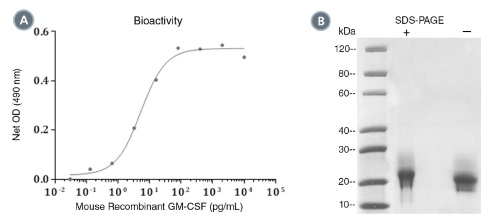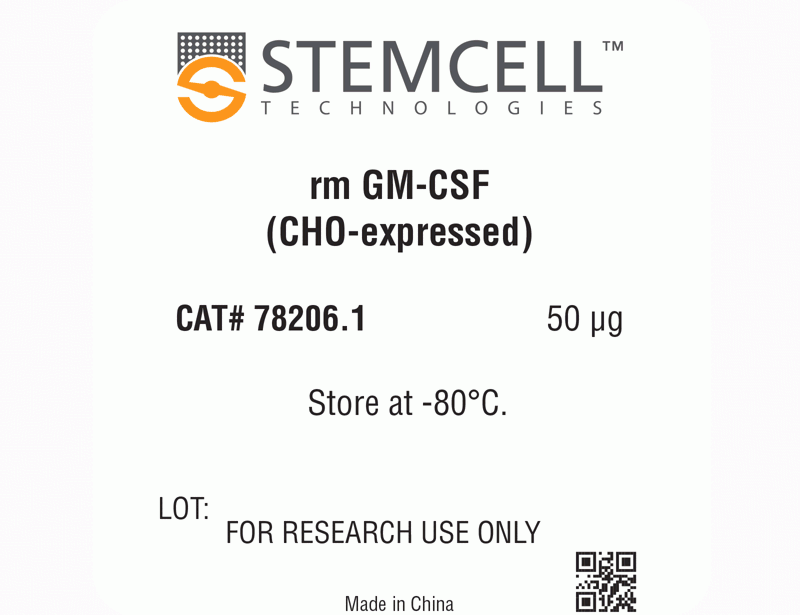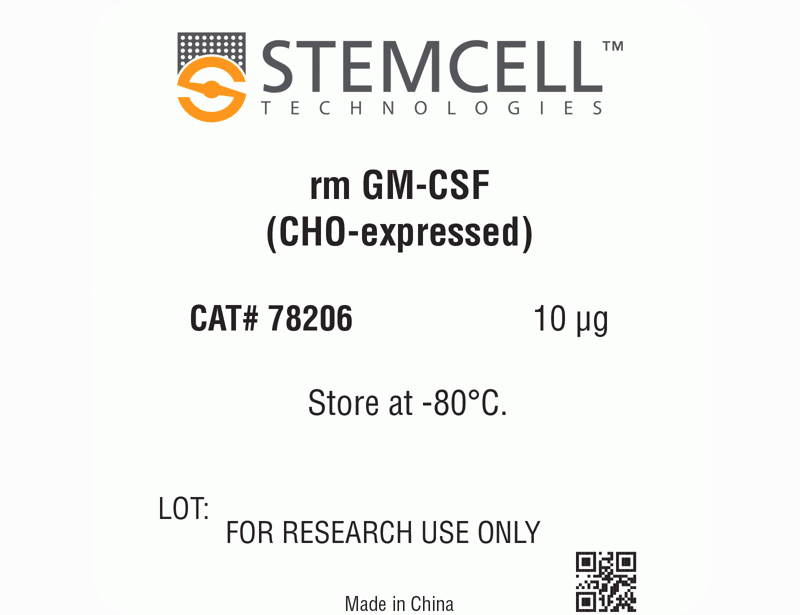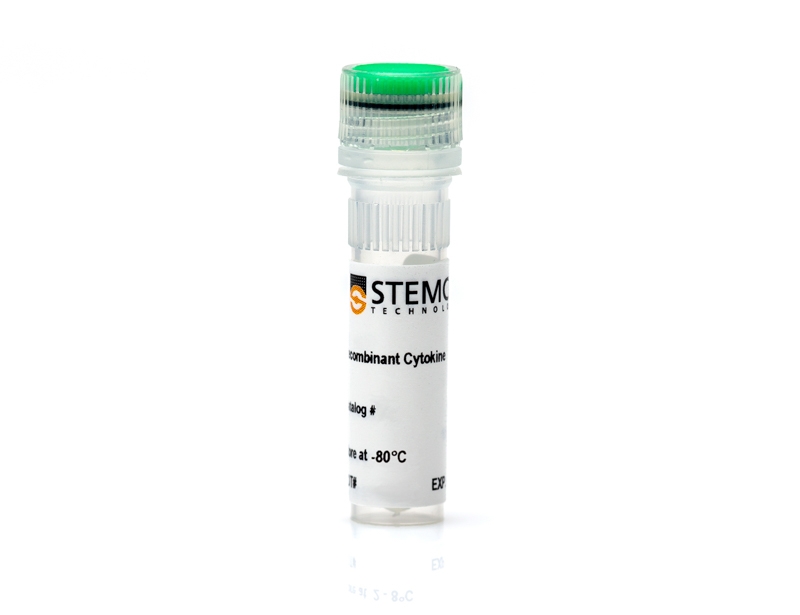概要
Granulocyte-macrophage colony-stimulating factor (GM-CSF) promotes the proliferation and differentiation of hematopoietic progenitor cells and the generation of neutrophils, eosinophils, and macrophages. In synergy with other cytokines such as stem cell factor, IL-3, erythropoietin, and thrombopoietin, it also stimulates erythroid and megakaryocyte progenitor cells (Barreda et al.). GM-CSF is produced by multiple cell types, including stromal cells, Paneth cells, macrophages, dendritic cells (DCs), endothelial cells, smooth muscle cells, fibroblasts, chondrocytes, and Th1 and Th17 cells (Francisco-Cruz et al.). The receptor for GM-CSF (GM-CSFR) is composed of two subunits: the cytokine-specific α subunit (GMRα; CD116) and the common subunit βc (CD131) shared with IL-3 and IL-5 receptors (Broughton et al.). GM-CSFR is expressed on hematopoietic cells, including progenitor cells and immune cells, as well as non-hematopoietic cells. GM-CSF is able to stimulate the development of DCs that ingest, process, and present antigens to the immune system (Francisco-Cruz et al.).
数据及文献
Publications (1)
Science (New York, N.Y.) 2019
Bacteriophage trigger antiviral immunity and prevent clearance of bacterial infection.
J. M. Sweere et al.
Abstract
Bacteriophage are abundant at sites of bacterial infection, but their effects on mammalian hosts are unclear. We have identified pathogenic roles for filamentous Pf bacteriophage produced by Pseudomonas aeruginosa (Pa) in suppression of immunity against bacterial infection. Pf promote Pa wound infection in mice and are associated with chronic human Pa wound infections. Murine and human leukocytes endocytose Pf, and internalization of this single-stranded DNA virus results in phage RNA production. This triggers Toll-like receptor 3 (TLR3)- and TIR domain-containing adapter-inducing interferon-beta (TRIF)-dependent type I interferon production, inhibition of tumor necrosis factor (TNF), and the suppression of phagocytosis. Conversely, immunization of mice against Pf prevents Pa wound infection. Thus, Pf triggers maladaptive innate viral pattern-recognition responses, which impair bacterial clearance. Vaccination against phage virions represents a potential strategy to prevent bacterial infection.
View All Publications


 网站首页
网站首页





